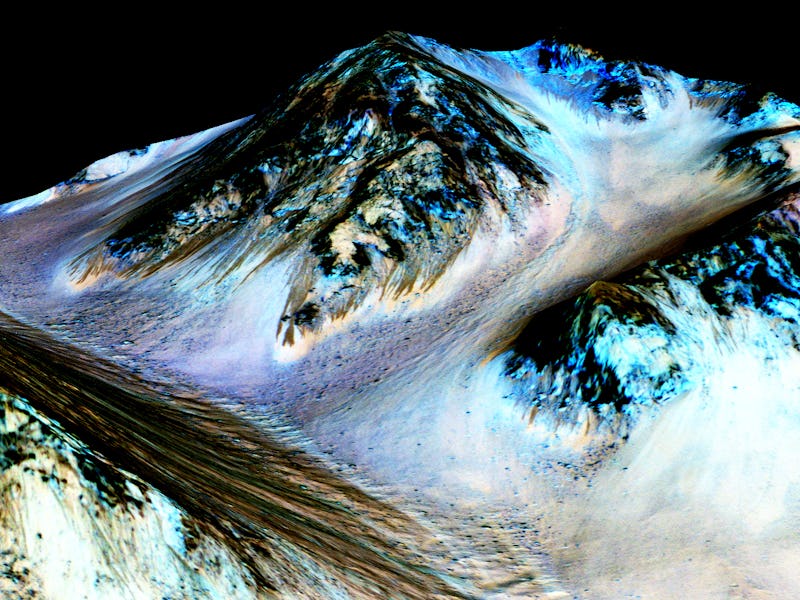The Mystery of Water on Ancient Mars Just Got Way Weirder

Turns out, the levels of carbon dioxide on early Mars were too low to foster a warm enough red planet where liquid water could exist. Without sufficient carbon dioxide, the planet would have been far too cold to feature a lake environment 3.5 billion years ago. And yet, we know that Mars had ancient lakes! Scientists are baffled by the new findings, published Monday in the journal Proceedings of the National Academy of Sciences.
Before the research team at NASA’s Ames Research Center found otherwise, we always thought carbon dioxide was crucial to keeping a planet warm enough to be potentially habitable. Young Mars must have had a decent supply — after all, we know there was liquid water. So if carbon dioxide levels back then were too low to keep the water temperature above freezing, what else could have been doing it?
“That’s really tricky, and we don’t have a very good idea of how that happened,” Thomas Bristow, a research scientist Ames and the paper’s first author, told Inverse by phone. “I can tell you that there are a couple of possibilities.”
Possibility #1: The lakes could have been covered by a layer of ice that acted as a sort of blanket, preventing the water beneath from freezing or escaping into the atmosphere — sounds reasonable enough. The problem here is that the Curiosity rover hasn’t seen any convincing evidence of this ice cap in the sediment it’s been analyzing. If a sample had been deposited in an icy, glacial environment, it should have a particular set of features, like drop stones (rock fragments that became embedded), ice wedges, or glacial till (a term for a kind of glacial-deposited sediment).
So far, however, we’ve observed nothing.
Possibility #2: Mars overall has always been extremely cold, but perhaps it was warmer intermittently. Sulfur dioxide released by volcanoes could potentially keep the planet warm for maybe a few hundred or thousand years at a time before it escaped out of the atmosphere and left the planet to cool again. The problem with this theory is that Curiosity has been working its way through hundreds of meters of Gale Crater lake deposits already, which implies the lake was around for hundreds of thousands to millions of years — so that the “transient volcanic model,” as Bristow describes it, doesn’t seem to fit.
Scientists are also looking to the effects of various greenhouse gases for a potential explanation, but essentially there’s no clean answer so far. As [Curiosity] keeps going up Mount Sharp, Bristow and his colleagues will keep observing the sediment and look for clues as to whether there was ice or not.
“The rover is going to keep climbing, and we’re expecting to see changes in climate conditions on Mars being reflected in changes in the rocks as we climb [higher up Mount Sharp],” Bristow said. “So perhaps we go along and build that story well get additional clues into exactly how early Mars was operating.”
This is as good a place as any to bring up the faint young sun paradox — early Earth had liquid water just as early Mars did, and yet the Sun two or four billion years ago should have been too young and faint to produce enough energy for that. The new findings simply deepen the mysteries behind how water and habitable environments developed in the solar system.
We’ve been able to investigate the mystery on Earth by looking at ancient rocks, and on Mars by analyzing images from afar, but one of the very many cool things about Curiosity is that this is the first time we’ve really been able to get on the ground and test ancient rocks on the red planet, too. Now that we can begin comparing that data to the data we’ve gathered from space, maybe we’ll start getting somewhere.